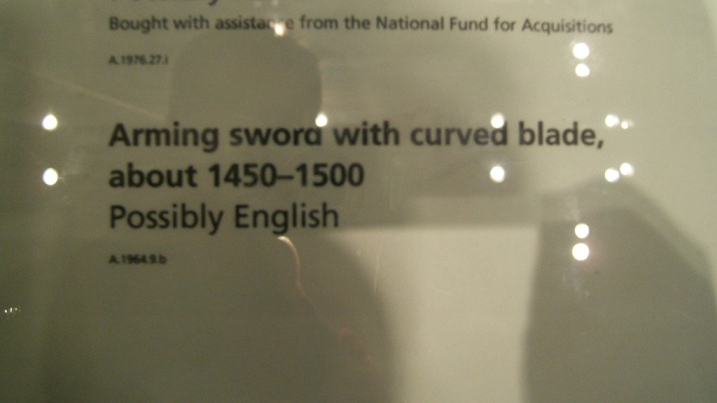The pics were taken off of Andrea Carloni Flickr page and it seems to be listed as an arming sword. But it almost looks like a double sided arming sword mounted with a "messer style" hilt. I absolutely love it.
Better pics would be fantastic.

[ Download ]
[ Download ]